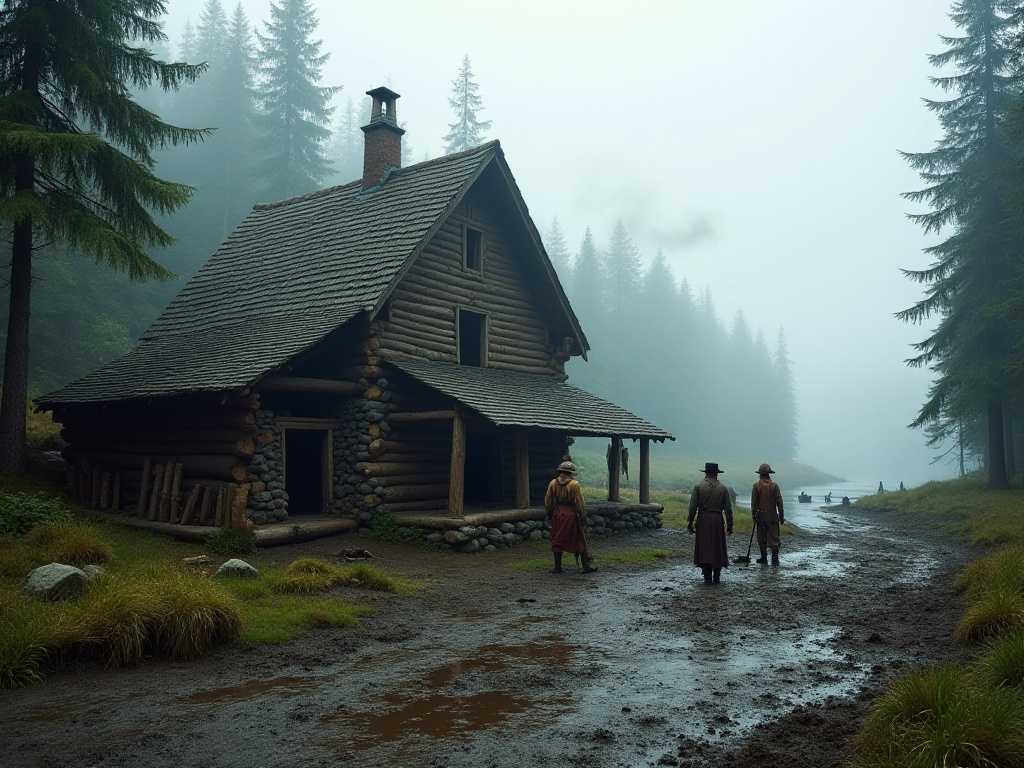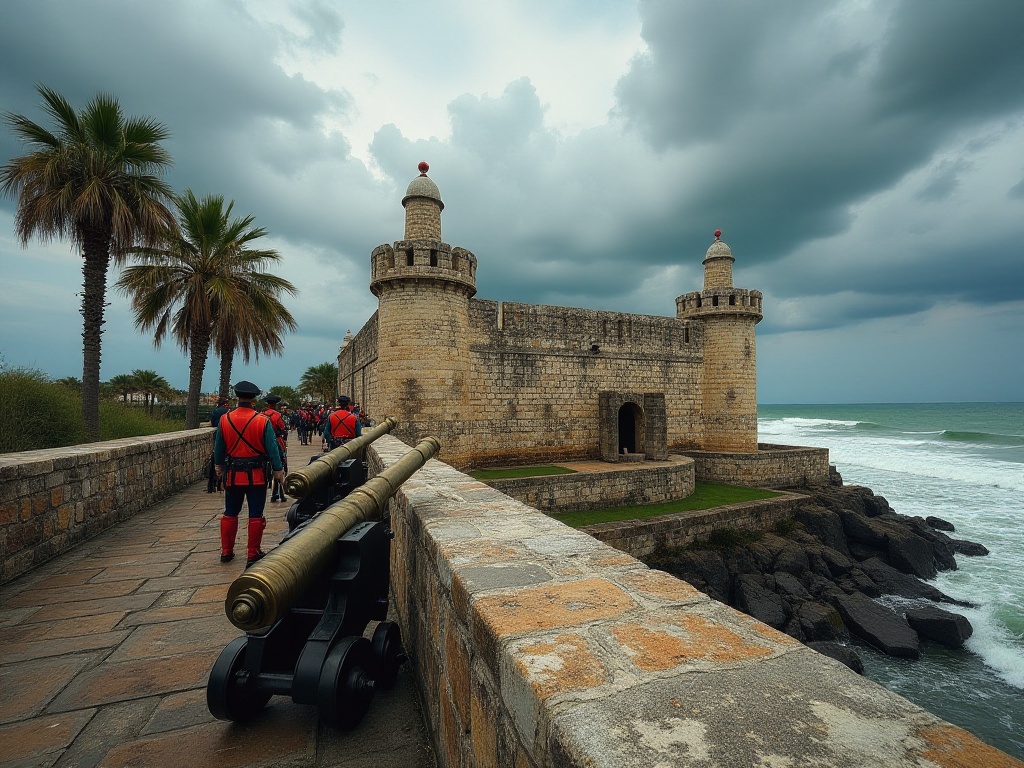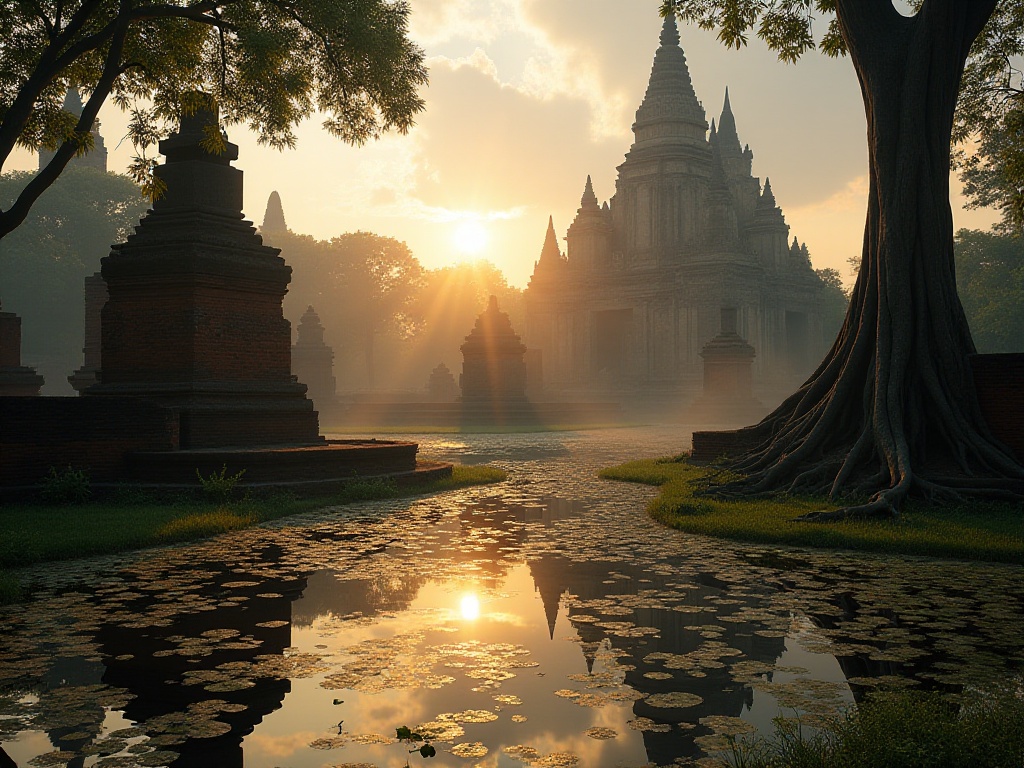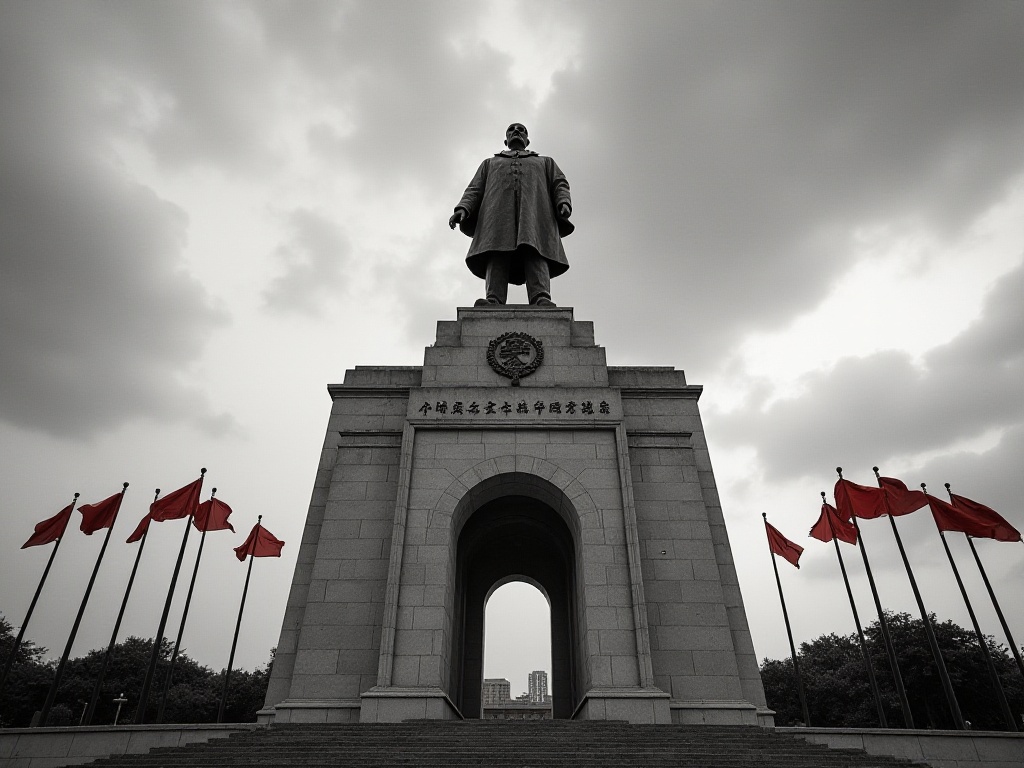Foreword Reflections
To be honest, I used to think visiting ancient ruins was just about looking at broken walls and listening to tour guides drone on about outdated historical stories. Every time I went with a tour group for a quick walkthrough, I basically just took some tourist photos and then rushed off to find good food. But after becoming a travel blogger and visiting historical sites around the world, I discovered I had missed so many fascinating stories.
These seemingly ancient architectural ruins are actually like history albums waiting for us to open. Behind every brick and tile lies an amazing human story; within every site lies profound traces of civilization. Today, let me help you rediscover these magical places. I believe you'll fall in love with these treasures of human wisdom just like I did.
Exploring Europe and America
I remember my first visit to Elfreth's Alley in Philadelphia on a sunny afternoon. Walking into this street built in 1728, I was immediately stunned. More than a historic street, it was like a time tunnel. The cobblestone pavement had been polished smooth by time, with each stone seeming to tell the stories it had witnessed.
The brick houses on both sides were well preserved, with brass door knockers still gleaming warmly. These buildings weren't museum exhibits but living fossils that had truly carried nearly 300 years of history. Standing in front of a brick house, looking at that deep blue wooden door, I couldn't help imagining if Benjamin Franklin had once pushed open this door to discuss America's future with other founding fathers.
The street lamps still maintain their 18th-century style. Every evening, when the caretaker manually lights these gas lamps, the entire street is enveloped in a warm and mysterious glow. I deliberately strolled the street at this time, watching my shadow dance under the gas lamps, momentarily glimpsing well-dressed gentlemen and ladies from centuries ago passing by.
Speaking of early American history, Cooperstown is definitely a place worth lingering. It's not only home to America's earliest rural life museum but also the birthplace of baseball. I'll never forget my visit last summer. The museum was holding a special baseball-themed exhibition, with equipment, uniforms, and photos from different eras on display.
In those yellowed old photos, athletes wearing classic baseball uniforms looked focused, with wooden bats and handmade leather gloves showing traces of time. Most touching was a 19th-century baseball uniform that still bore the athlete's sweat stains. Standing before the glass display case, I could almost hear the cheers and crack of bats from the field.
In Cooperstown, there's also a completely preserved 19th-century farmhouse. Stepping inside, I felt transported to America's pioneer era. The kitchen still had the original cast-iron stove with period cookware, while the living room contained authentic rocking chairs and looms. Most interestingly, every weekend staff dressed in period costumes demonstrate traditional crafts like spinning, candle-making, and bread baking.

Asian Exploration
Speaking of Asian historical sites, they're truly eye-opening. Last summer, I specifically visited the Erlitou site in Yanshi, Henan, a place known as "China's earliest royal capital," which gave me many surprises. The day I arrived, the archaeological team had just unearthed a collection of exquisite bronze vessels. Looking at these excavated artifacts, it's hard to imagine these refined objects were made by our ancestors over four thousand years ago.
In the site museum, we can clearly see the development of the ancient city through stratigraphic profiles. The bottom layer shows building foundations from the Xia Dynasty, with cultural layers from the Shang and Zhou periods above. Each layer is like a history textbook, recording ancient people's life details in detail. My favorite is a jade piece, a finely crafted pendant with clearly visible patterns, making one marvel at ancient craftsmanship.
Standing on the remaining rammed earth foundation in the palace area, I kept imagining how prosperous this place once was. Archaeological findings show there were once magnificent palace complexes, complete bronze smelting workshops, and well-planned residential areas. This was far from our impression of primitive society - it was clearly a highly developed ancient city.
At Changdeokgung Palace in Seoul, Korea, I experienced a completely different aesthetic. This UNESCO World Heritage site's main feature is its harmony with the natural environment. The entire complex was built along the mountain, perfectly preserving the original topography. The architects fully utilized natural slopes, integrating the palace buildings with the mountain contours.
The palace's rear garden is particularly enchanting in spring. Centuries-old trees dance in the sunlight, cherry and plum blossoms compete in bloom, complementing the vermillion palace buildings to create a moving picture. I especially love the pavilions in the rear garden, all built in carefully chosen locations where every angle presents a perfect natural painting.
At Changdeokgung, you can truly feel the aesthetic pursuits of the Joseon Dynasty period. Unlike the grandeur of Chinese palaces, everything here embodies subtlety and elegance. I particularly love a building called "Yeonmyeongdang," built on a small hill surrounded by an artificial lake. Sitting inside and opening the wooden windows, the entire garden view unfolds before you, making one marvel at ancient wisdom.

Technological Innovation
With technological development, historical sites' presentation methods have become increasingly diverse. Take the Sui-Tang City National Archaeological Site Park in Luoyang for example - it perfectly demonstrates how modern technology can make history speak. The entire site park uses holographic projection technology, allowing visitors to directly experience the magnificence of the Tang Dynasty.
I happened to visit during an evening showing, and the experience was absolutely amazing. As dusk fell, massive holographic projections began appearing in the night sky. Before my eyes, the majestic Yingtianmen Gate slowly rose, officials, merchants, and commoners in Tang Dynasty costumes bustled through the streets, haggling sounds came from nearby shops, and distant camel bells of foreign merchants could be heard. This wasn't just an exhibition - it was like traveling back to the Tang Dynasty's golden age.
Most impressive was the site park's recreation of a complete Tang Dynasty market street. Through modern sound and light technology, visitors can experience the prosperity of the period's markets. Along the street are restored teahouses and restaurants, with craftsmen making Tang Dynasty specialty crafts on site. I tried tea prepared according to Tang Dynasty methods in a teahouse, its unique fragrance seemingly taking me back a thousand years.
As for the Zhouqiao Bridge site in Kaifeng, it really opened my eyes. The presentation method here can be said to have pioneered a new era in archaeological site exhibition. Archaeologists designed a timeline on the ground, clearly marking different historical periods' strata positions. Most amazingly, through AR technology, visitors can see the bridge's appearance from different periods just by pointing their phones at the ground.
Standing at the Song Dynasty layer marker, I opened the mobile app, and immediately a bustling water transportation dock scene appeared. Boats of various sizes were moored at the dock, loading and unloading porcelain and silk. Merchants called out loudly, porters rushed back and forth, and storytellers' voices could be heard from riverside teahouses. A few steps forward, the scene switched to the Ming and Qing periods, where the bridge area had become a prosperous commercial district with shops everywhere and people coming and going.
Most exciting was that this AR system not only showed buildings' exteriors but also let you "enter" historical scenes. Pointing my phone at a Song Dynasty tavern, I immediately entered its interior. You could clearly see the period furniture arrangement, wine vessel placement, and even wall decorations. Through this method, previously dry historical sites suddenly became vivid and interesting.

Conclusion and Future Outlook
After years of travel, I have a completely new understanding of historical sites. They are no longer lifeless ruins but time museums full of vitality. Each site is like an open history book, allowing us to directly understand our ancestors' wisdom and civilization's evolution.
The application of modern technology has given these ancient sites new vitality. Holographic projection, AR technology, scene restoration, and other innovative methods not only make visits more interesting but more importantly make history tangible. When we can "see" historical scenes with our own eyes and "walk into" ancient people's lives, history is no longer dry text in textbooks but vivid stories.
Each visit to a historical site brings new discoveries and insights. Sometimes it's an exquisitely carved stele, sometimes an ingeniously designed architectural detail - all these make me constantly marvel at ancient wisdom. At these places bearing humanity's civilizational imprints, we can not only understand history but also contemplate the present and envision the future.
So, next time you have the chance to visit historical sites, try slowing down and feeling them with your heart. Observe the details, imagine the scenes from back then, and you might discover your own historical code. These ancient sites are waiting for everyone willing to listen to discover their stories.







